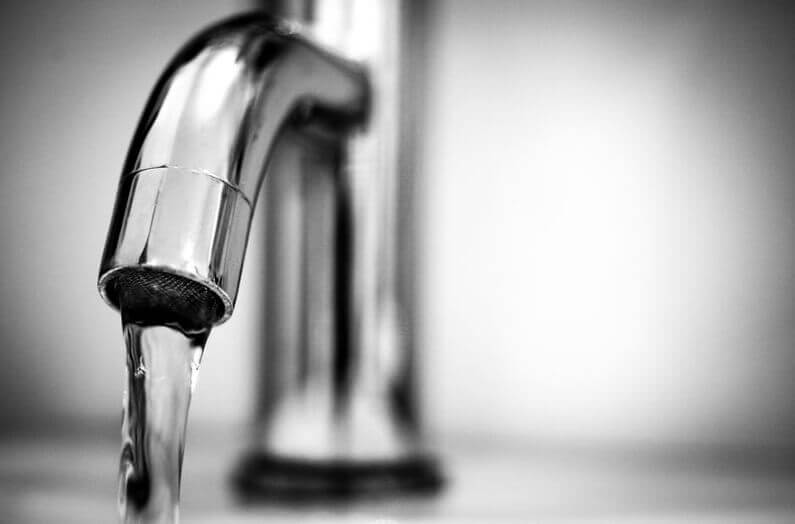
Diagnose the Problem: What Causes a Leaking Faucet?
Leaky faucets around the country waste almost 1 trillion gallons of water each year. For a single household, a single leaky faucet can waste up to 10,000 gallons of water per year, which is a lot of wasted water and money.
The problem is, many homeowners continue to ignore a leaking faucet, thinking it’s “no big deal,” or no reason to call a plumber. The truth is, when a faucet leaks, there’s an underlying cause. Figuring out what the cause of the leak is can be more challenging than many people think.
If you have a leaky faucet, or just want to ensure you are prepared if this situation ever occurs, keep reading. Here you can learn about some of the most common causes of a leaking faucet.
A Bad O-Ring
One issue that occurs on cartridge faucets is a worn-out or loose O-ring. This is the small disc that’s attached to the faucet’s stem screw. It’s responsible for holding the faucet’s handle in place.
If the O-ring is bad, it will cause the faucet to drip close to the handle. Usually, replacing the O-ring will fix this problem.
Loose Parts
Modern faucets have an array of small parts that work together to deliver seamless water flow. After years of use, the parts can wear out and no longer work efficiently.
If the faucet has started to leak close to the base, it may be that the packing nut or adjusting ring is loose. If you have a rotary ball faucet, all you have to do is remove the handle and tighten up the adjusting ring. If there’s still a leak coming from the base, it may be time to replace the seals or springs.
Corroded Valve Set
If the leak originates from the faucet’s spout, it may be a problem with the valve seat. This is responsible for connecting the spout and the faucet.
Sometimes, water sediments can build up, corroding the valve seat and resulting in a leak. This can be avoided if you clean the valve seat regularly but take note – a professional’s help may be needed to do this.
Problems with the Washers
While the O-ring and other parts can get worn out, so can the washers. The washers in your faucet are metal or rubber pieces that seal gaps in the pipe to help prevent leaks. These can also wear out with use, as the washers begin to rub against the parts they are placed between.
Sometimes, a leak may also occur if the washer was not installed properly, or if the wrong size of washer was installed, to begin with. If you plan to replace the washer on your own, be sure you are using the right size.
Water Pressure Problems
Does the faucet only drip during certain times of the day? Or does it tend to drip more if the handle is moved certain ways? If so, the problem may be with the home’ water pressure, so it’s a good idea to have a professional evaluate the plumbing system and determine if this is the underlying cause of a leak.
Broken Parts
If the leak is coming from the pipes that are under your sink, the most likely issue is a broken fitting or pipe. If this is the case, it’s best to call a plumber, as they will fix the broken pipe problem and ensure no other issues are present.
Taking the DIY Approach to Fix a Leaking Faucet
If you want to try to handle a leaking faucet on your own, there are several steps you can use. These include:
Determine the Type of Faucet You Have
You need to first determine the type of faucet you have. This will dictate the direction of the repair. The three most common types of faucets include:
- Ceramic disk faucets
- Ball faucets
- Cartridge faucets
Once you know what type of faucet you are working with, move on to the next step.
Prep Your Work Area
Before doing any work on your sink or faucet, make sure to turn off the water supply. You also need to plug the drain with a rag or something else. You don’t want to lose any of the parts.
It’s also necessary to remove the decorative part from the handles. There should also be a screw that connects the faucet’s handle to the stem that needs to be unscrewed, and the handle removed.
Checking the Parts and Components
Once you have removed the handle, you can use your wrench to loosen the packing nut and the stem and inspect these parts for damage. Also, check the washer and O-ring in the valve seat. Try replacing the washer to see if that fixes the leak.
If none of these steps work, it’s time to call in a plumber. They can quickly and easily identify the underlying issue.
Call a Plumber for Quality Repairs
If you have a leaking faucet, you can try to fix it on your own. However, if the tips listed above aren’t effective, the best thing you can do is to call a plumber.
They will inspect the faucet and determine the underlying cause of the leak. The plumber can also check the rest of the faucet to ensure there are no other issues present.
If you need plumbing repair services, for a leaky faucet or another component of your plumbing system, contact our team right away. We can evaluate the issue you are having and ensure it is fixed properly.
